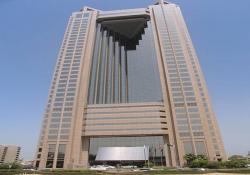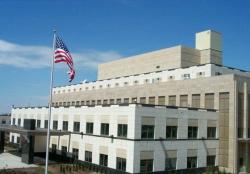HAZ METAL FIXING SYSTEMS UK LTD
x
HAZ Metal : What Is A Ventilated Facade?
 What Is A Ventilated Facade?
What Is A Ventilated Facade?
A ventilated facade is a cladding system made up of an insulation layer and stone cladding panels. The panels are fixed to the exterior surface of a building using open joints and air gaps to encourage natural ventilation and provide a protective double shell.
The gap between the insulation and outer cladding is at least 50mm, maintained by a sub-channel anchoring system made from aluminium or steel.
The Benefits of Installing Ventilated Facades
Applying ventilated facades provides several advantages compared to other cladding and mechanical fixing systems.
The building construction and integrity is enhanced by:
Improved ventilation due to natural air circulation
Protection against damp and condensation
Lower energy costs due to reduced thermal bridging
Appearance is improved with attractive natural stone panels.
As well as the practical construction advantages listed above, there are also many installation and maintenance benefits to be had, including:
Reduced cracking and detachment risk due to independent fixing system of each panel
Easy installation due to 3D adjustable fixing systems
Create a flat, even cladding surface on uneven structures
High durability and hard-wearing surface to minimise maintenance costs
Excellent safety standards and longevity due to compliance with EN standards
Easy to replace individual panels if needed
All frame components are made from corrosion resistant stainless steel and coated mild steel
Full waterproofing is ensured with a barrier applied to the concrete face which continues into the window frames for full coverage.
How Ventilated Facades Work – Basic Technical & Design Principles
This article will not go into a great deal of technical detail, but we want to give you an overview of how ventilated facades and fixing systems work.
Durable, attractive natural-stone panels
The ventilated cladding system is made up of strong natural stone panels, available in different dimensions. A waterproof coating is applied to the face of the panels, which extends into the windows to provide full water resistance.
Versatile support frame and fixing system
The stone panels are anchored to the channel that spans the structural concrete beams, securely connected by load-bearing channel supports.
The sub channel frame system can be adjusted in three dimensions, which means that you can achieve a nice flat and even surface, regardless of the unevenness of the structural walls.
Protective and energy-saving insulation
Between the sub-channel and the stone panel, an insulating layer helps to maintain the thermal stability of the building. The insulation is made of self-supporting water-repellent glass wool panels to ensure high heat retention in the winter, while also protecting from solar overheating in the summer months.
Save Money and Improve Structural Performance With Ventilated Facades
Ventilated facades help to protect buildings from cracking, fissures, wear, and degradation, as well as making buildings look more attractive. They help property owners to save money by reducing long term maintenance and repair costs.
To discover how HAZ Metals can help you protect your building with high-quality ventilated facade fixings, get in touch with one of our expert team today.
contact : info@hazmetal.co.uk
HAZ Metal : Natural Stone Fixing Systems
 Natural Stone Fixing Systems
Natural Stone Fixing Systems
Natural stone is a construction material that offers many advantages when used as a wall cladding of external facades. It has high durability features, requires low maintenance and significantly improves the heat & sound insulation of the building. Most of all, the unique look of the natural stone facing conveys and creates an aesthetic appearance of the building which adds value to it and make the building one of a kind.
In the past when the natural stone was used as load-bearing material walls where massive stone blocks were stacked within the structures’ wall. With the newest technology enabling to manufacture of thin stone panels, Natural stone is used as a cladding material for the face covering of the building. The structural role of the stone cladding is now flexural as a facing instead of compressive as blocks, contrary to its natural strength and origin.
In order to achieve a proper stone cladding project that preserves the features of the natural stone cladding proper design must be made and the use of correct fixing systems must be made.
With today’s cladding technique the stone cladding is made of thin panels in 20 to 50 mm thick that is attached to the load-bearing structure with means of fixings systems that are made from Stainless steel brackets. In some cases, the use of channel support systems is used in Aluminium or stainless-steel material. This fixing system technique is universally called a Ventilated façade which also can be referred to as Rainscreen cladding systems.
The term “ventilated facade” is used for the latest technology in natural stone installation. Other terms. such as mechanical fixing, anchoring systems and fixing systems are also used. Stone slabs are independently fixed to the backing wall with a cavity between the wall and the panel. This allows the replacement and repair of any slab without damaging the rest of the facade. The most important effect of this system is not only the security. With this system, there is space between the wall and the stone causing air ventilation, which creates natural isolation for the building. Air circulation through the cavity and open joints keep the natural stone panel’s dry and clean providing natural maintenance for the long durability of the facade.
Natural Stones panels are supported with stainless steel fixings in vertical or horizontal joints, depending on the location of the slab on the facade. The fixings enable three-dimensional adjustability, which provides 15 mm tolerance. This is normally adequate even if normal construction tolerances of the concrete frame are exceeded. The main purpose of these anchors is to transfer the dead load of the panels to the building.
There are many types of fixing systems that are used for special circumstances and technical specifications of the project. Fixing systems differ according to the dead load, size of projection, type of wall height of the building, wind load, seismic load and the nature of the installation.
There is Direct Fixing to Concrete walls and indirect fixing to subchannel systems. Subchannels are used either when the projection sizes are large or the walls are brick or Yutong where bolts cannot be used.
The advantage of the system can be summarised as follows: –
Fixings manufactured to known and tested to design criteria.
Channel Supports and Frames, Fixings and Bolts are all corrosion resistant Stainless Steel or Aluminium.
No bridging of the cavity can occur, as brackets do not transport moisture. An open cavity is kept which allows free ventilation.
The waterproof barrier is at the concrete face and this continued into the window without interruption.
Joints between the stones can be maintained at a uniform size.
Thermal and substrate movement is accommodated into the joint.
The risk of progressive collapse is eliminated.
Individual stones can be replaced.
The Fixing System greatly reduces damage to the cavity insulation and cold reduces bridging.
Slabs are supported independently.
HAZ Metal Fixing Systems is a worldwide renowned company that offers design and supply of fixing systems for Natural stone cladding. The company has extensive technical knowledge and experience and offers technical consultancy and design services for Architect, Builders and specialist façade contractors. Haz Metal Fixing systems have the capacity to supply projects of any size with the products and components required for the installation of natural stone wall cladding.
contact: info@hazmetal.co.uk



